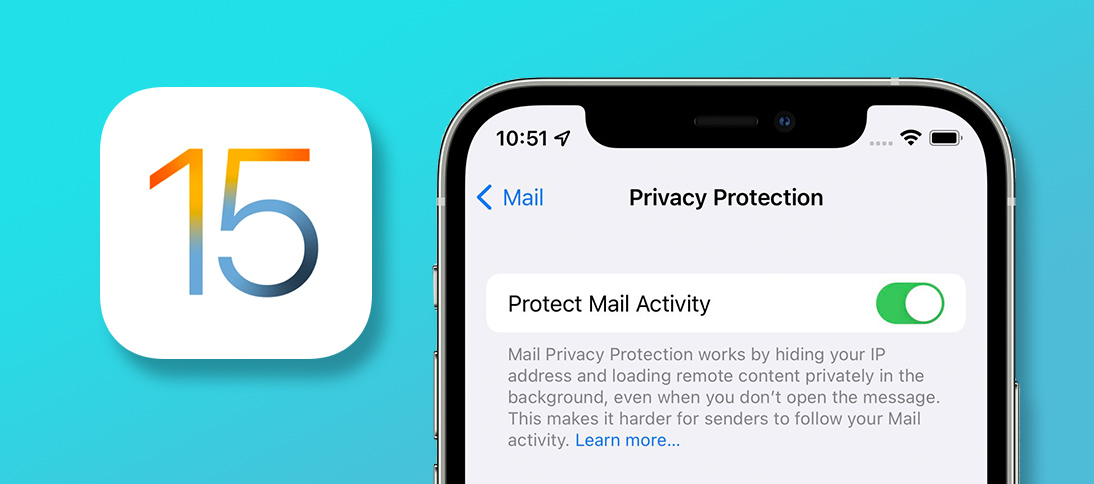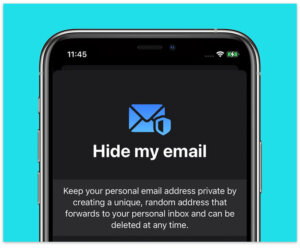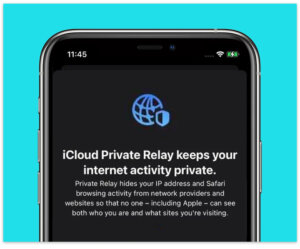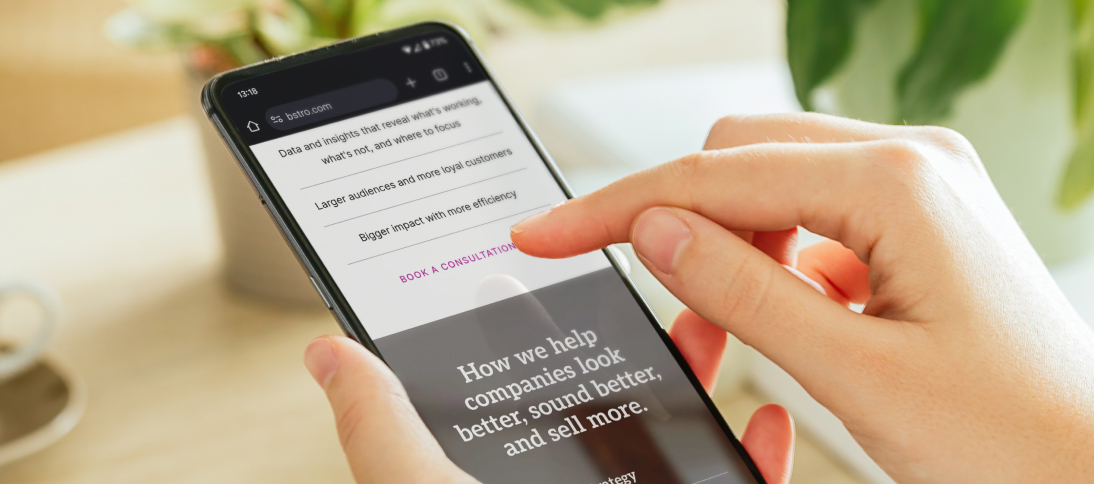We’ve been waiting all summer for an answer to the question: is the release of iOS 15 the beginning of the end for email marketing? Since Apple announced the update, email marketers have been scrambling to get ready for the new privacy updates. We’re not going to lie, the numbers do raise some cause for concern: Apple now commands up to 48% of the email client market share, with 90.5% of all mobile email happening on an iPhone—the update will undoubtedly have an impact. But all is not lost!
Keep reading to learn what iOS 15 means for email marketing going forward.
What features have been released with iOS 15?
Public discourse on user privacy has been pretty rampant over recent years—just ask Mark Zuckerberg. Add that to Apple’s vocal stance on privacy, and it’s no surprise that the new iOS features are optimized to better protect personal information.
In the previous iOS 14.5 update, App Tracking Transparency needed user permission to track their data across apps and websites. The newest update expands on these features, automatically upgrading paying iCloud users to iCloud+.
Two key privacy features that are available with the iCloud+ update include:
Hide My Email
With Hide My Email, Apple Mail users can use private proxy emails. The feature allows users to interact with brands using random email addresses. These proxies then forward the messages to their real email address.
Aside from privacy, one of the big perks of Hide My Email is to prevent spam emails from reaching the user. Using a “burner” email also means the user can delete the address at any time, with no strings attached.
Private Relay
When Private Relay is enabled, all browsing activity on Safari will be encrypted before it’s sent over to Apple. Apple will only retain your IP address from this process.
The tech giant is also teaming up with trusted partners, who the encrypted information will go to next. Apple hasn’t given out any names, but rumor has it that the likes of Akamai, Cloudflare and Fastly (all of whom declined to comment) have been enlisted to help out. These partners have the decryption key, along with a fake IP address based on your general location.
As a result, each party gets one side of the story: Apple will know your IP address but not the sites you’re visiting, and the partner will know the site you’re visiting but not your IP.
Because Private Relay helps prevent tracking of your web activity, many have compared it to a VPN—but we wouldn’t consider it a total replacement.
How will the new iOS 15 privacy features affect email performance tracking?
Relying on open rates is a thing of the past
Sadly, it’s time to bid open rates adieu. Open rates are measured through pixel tracking, where a tiny invisible image is embedded in the email code. The image loads when the email is opened, which tells the sender that the user opened the email.
With Mail Privacy Protection, Apple Mail will pre-load that image and all other scripts once the email is received, rather than when it’s opened. This puts email marketers in a bit of a jam, as we can no longer determine whether an email has been opened or simply received.
What to expect: Your open rates will likely jump significantly post-update, which means they can no longer be considered the primary metric when measuring subscriber engagement. A/B testing of subject lines will have to go, too.
The loss of the open rate will also affect list hygiene, which points to how much a recipient wants to receive your emails. Retention and re-engagement marketing, which depend on open rates, will also need updating—you may have to flood your subscribers with a few messages as you put them back into relevant segments.
IP-based geo-segmentation
Private Relay will also put a stop to IP-based geo-segmentation. Suppose a user’s IP address is blocked. In that case, email marketers can’t personalize or optimize the send-time of their email campaigns, as it impacts the accuracy of recipients’ local time zones and locations. We love a good countdown to build excitement, but the risk of an inaccurate timer may do more harm than good for business.
Email list hygiene will need some work
With Hide My Email, brands may lose the ability to tie information to accounts, which may be under a dummy address. Lack of data on the subscriber’s primary email can result in difficulty segmenting and ensuring that relevant emails are getting through to the user. As a result, list hygiene may also suffer.
What do email marketers need to focus on now?
We know; it’s a lot to take in. But before you freak out, let’s look at how email marketers can pivot their strategy in light of the new update.
The iOS update asks marketers to re-assess engagement metrics, which involve actions taken outside of the customer’s inbox. To address this, double-down on what conversion is for your company—what is the driving action from email, and how can you measure it specifically for your brand?
Pivot to click rates
Since open rates are now a thing of the past, instead, take a granular look at click rates. This includes where customers click and for how many times. Strengthen CTAs that encourage these clicks and adjust automations to focus on click rates instead of opens. High clicks may suggest that your content was engaging, while lower clicks may hint that readers are less interested or skimming through your email and missing some content.
Invest in hyper-personalization
It’s time to get personal. Personalization has always been an essential part of email marketing. Still, the new changes stress the importance of sending emails tailored to the customer’s experience and stage in the buyer’s journey. For example, you may choose to collect information like birth dates. Deeper data, like purchase history, pages browsed, acquisition method, and more, can also help you narrow down your messaging.
You can track this information by applying tags, or labels, to leads and customers when they complete specific actions. There are a ton of marketing automation tools that can automatically apply tags to subscribers, which makes for easy segmentation.
You won’t get anywhere if you don’t know what to personalize. Push for subscribers to input their preferences during sign-up, so you know which lists and topics most interest them. In short, pay closer attention to the bottom of the email marketing funnel and ask your customers how they like to communicate.
Tighten up your content
Creating quality content matters now more than ever! Getting your reader’s attention with a catchy subject line is only the beginning—what follows after that click should be just as captivating.
No one checks emails expecting to pore over them, so keep content snappy, include relevant information, and leave out what’s unnecessary. Each opened email is a critical moment to reinforce loyalty or lock down your relationship with the reader, so make sure that your content is in tip-top shape.
Keep segments simple
Go back to basics with presets and pre-built segments. The number of contacts who meet these criteria will naturally be smaller after the update, but it’s an excellent way to continue highly targeted engagement segments. Consider prompting someone to interact with auto-reengagement. You can also sort subscribers based on past purchase behavior like amount spent and types of products bought, specific links clicked, subscription date, and other first-party data.
Make the most out of first-party data
Take advantage of the data that’s within reach. Enrich consumer profiles with cross-channel data, and figure out how the other metrics you can measure affect email.
For example, consider website engagement, such as visits and comments. With e-commerce, hone in on activities such as orders, repeat orders, and changes in order size.
The moral of the story is: Don’t overlook the data you already have! Historical engagement still matters. Modify how experimentation works accordingly. For longer-running businesses, historical data will go a long way in influencing testing moving forward.
Consider omnichannel marketing
Lastly, look outside of email and help drive personalized experiences with SMS and push notifications. For e-commerce in 2020, SMS sends were up 400% while conversion rates increased over 100%. E-commerce push notifications also ended the year with a 52.8% view rate and an impressive 28.1% conversion rate. You can’t really argue with the hard facts, which show that pivoting to omnichannel marketing is a pretty lucrative move.
One thing’s for sure: Email is not dead!
iOS 15 has thrown many email marketers in for a loop, but adjusting to privacy changes isn’t new. Various updates and software have constantly prompted marketers to question the effectiveness of email marketing; however, email has proven time and again that the inbox is a fantastic place to meet your audience and communicate important messages.
On top of that, let’s not forget that what Apple institutes doesn’t necessarily reflect the wants and needs of the consumer—83% of consumers are willing to share their data to create a more personalized experience.
If anything, the iOS 15 update offers brands an opportunity to reflect and improve on their current email marketing positioning, and aims to look beyond vanity metrics to build more meaningful relationships with customers over email.
Rest assured, email marketing will continue to be a vital customer touchpoint. It’s merely a question of adaptation, addressing changes proactively, and your brand’s capacity to pivot to other informative metrics. If you have any questions about your current strategy, how to pivot, or where to even begin, send us a message! One of our email specialists can schedule some time to discuss the challenges and opportunities that lie ahead. Happy email marketing!






